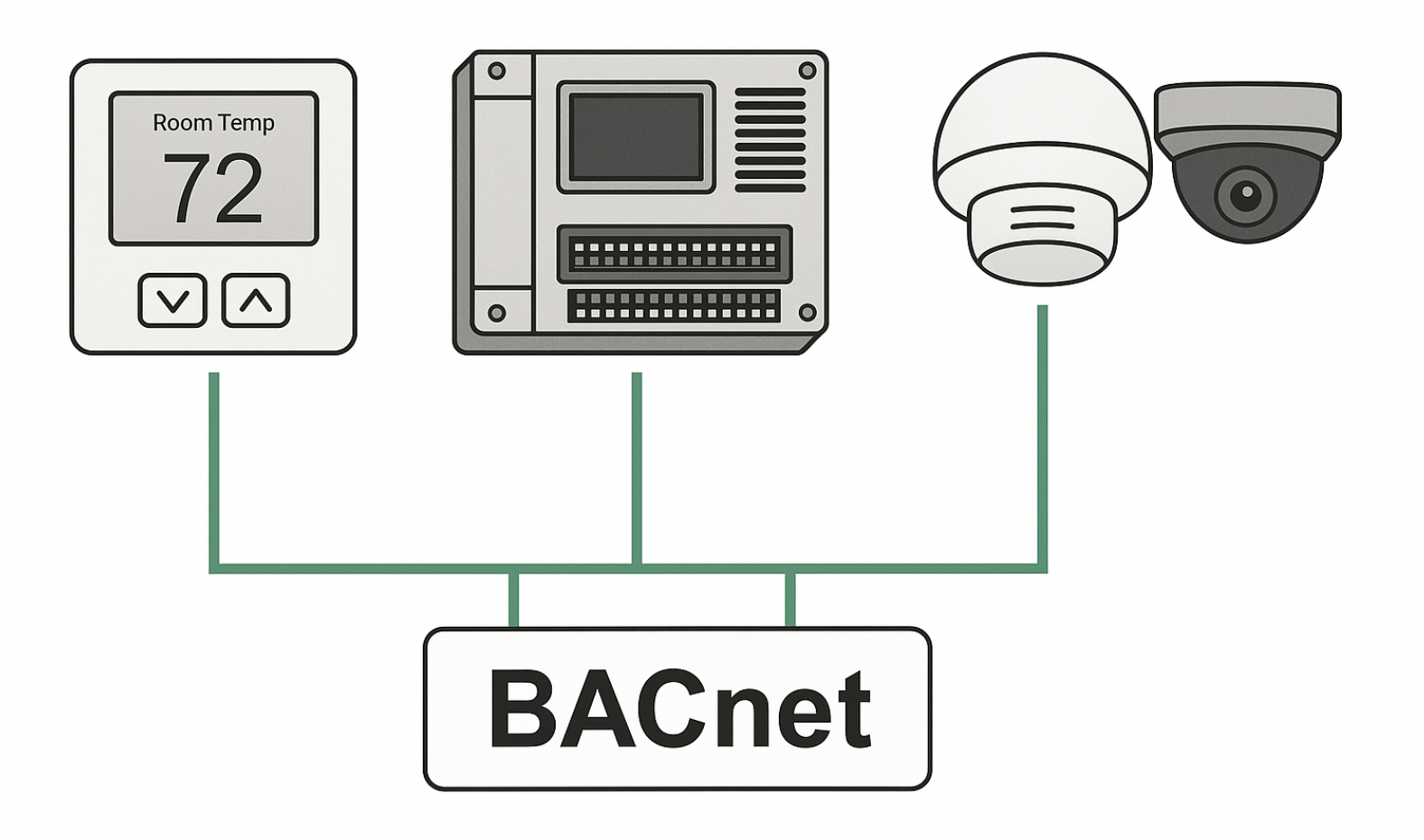As a senior engineer working in industrial automation, one of my key responsibilities is helping customers choose the right industrial communication networks, troubleshoot them, and ensure everything connects seamlessly.
Among all the protocols I work with, BACnet is one I recommend and integrate frequently. Below, I’ll share what BACnet is, how it works, and why it matters—directly from my day-to-day experience.
What Is BACnet?
BACnet (Building Automation and Control Network) is a standardized data-communication protocol developed by ASHRAE (American Society of Heating, Refrigerating and Air-Conditioning Engineers).
It’s specifically designed to allow building automation systems,HVAC, lighting, fire detection, access control, and more to communicate with each other, regardless of the manufacturer.
In simple terms, BACnet is the common language that lets different devices “talk” to each other, so you can integrate systems from multiple vendors without compatibility headaches.
This open-standard approach saves time, reduces costs, and makes troubleshooting easier for engineers like me.
A Brief History of BACnet
Back in 1987, ASHRAE launched a committee to create a universal building-automation protocol. After years of development, ANSI/ASHRAE Standard 135 was published in 1995, and BACnet quickly gained industry adoption.
By 2003, it became an international standard (ISO 16484-5), proving that engineers worldwide needed a vendor-neutral solution.
How BACnet Works
BACnet defines how devices exchange information using standardized messages—covering everything from reading sensor data to scheduling operations or reporting alarms.
Key technical points I often explain to clients:
Transport Layers
BACnet supports Ethernet, IP (BACnet/IP), RS-485 (MS/TP), and even wireless links, so it adapts to both legacy and modern infrastructures.
Object-Oriented Design
Each device is a set of “objects” (analog inputs, binary outputs, schedules, etc.), which keeps communication consistent and makes integration and troubleshooting straightforward.
Main Types of BACnet Protocol
When I design or troubleshoot systems, I choose the BACnet type that fits the site’s needs:
BACnet/IP
Runs over standard IP networks using UDP (port 47808). It’s fast, scalable, and integrates easily with IT infrastructure—ideal for campuses, hospitals, and large commercial buildings.
BACnet MS/TP
Uses RS-485 serial communication and a token-passing method. It’s slower but very reliable for field-level devices like sensors and thermostats.
BACnet Ethernet
An older method using Ethernet MAC addresses. Mostly legacy today but still encountered in some industrial facilities.
BACnet Point-to-Point (PTP)
RS-232 serial for direct two-device communication. Rare now but occasionally found in legacy setups.
BACnet over ARCNET
Early LAN option, largely obsolete but worth knowing for older installations.
BACnet over LonTalk
Supported for niche applications requiring mixed protocols.
Because BACnet separates the application layer from the data-link layer, the same BACnet message can travel across any of these transports, giving me the flexibility to match the network to the building’s scale and budget.
Real-World Applications I See Every Day
In my work, BACnet shows up across a wide range of systems:
- HVAC – Real-time control of chillers, boilers, and air handlers for energy efficiency and comfort.
- Lighting – Automated dimming, occupancy-based control, and emergency lighting integration.
- Fire & Life Safety – Coordinated alarm, ventilation shutdown, and emergency lighting.
- Security & Access – Door controls, surveillance integration, and centralized monitoring.
- Elevators & Escalators – Status monitoring and emergency coordination.
- Energy Management – Detailed metering, demand-response, and sustainability compliance.
From hospitals to industrial plants, BACnet is the backbone of intelligent, efficient operations.
Security and the Future: BACnet/SC
With BACnet/IP becoming more common, cybersecurity is critical. BACnet Secure Connect (BACnet/SC) adds TLS encryption and authentication, something I strongly recommend when I design new systems or upgrade older ones.
Why BACnet Matters to Me and to You
In my career, BACnet has consistently proven to be a reliable, scalable, and future-proof standard.
Whether I’m integrating a new HVAC system in a pharmaceutical facility or troubleshooting a legacy network in a university, BACnet simplifies communication and keeps everything working together.
Key Takeaway: What Is BACnet?
If you’ve ever wondered what is BACnet and why professionals like me rely on it, the answer is simple:
BACnet is the universal language of building automation, enabling interoperability, energy efficiency, and smarter infrastructure.

